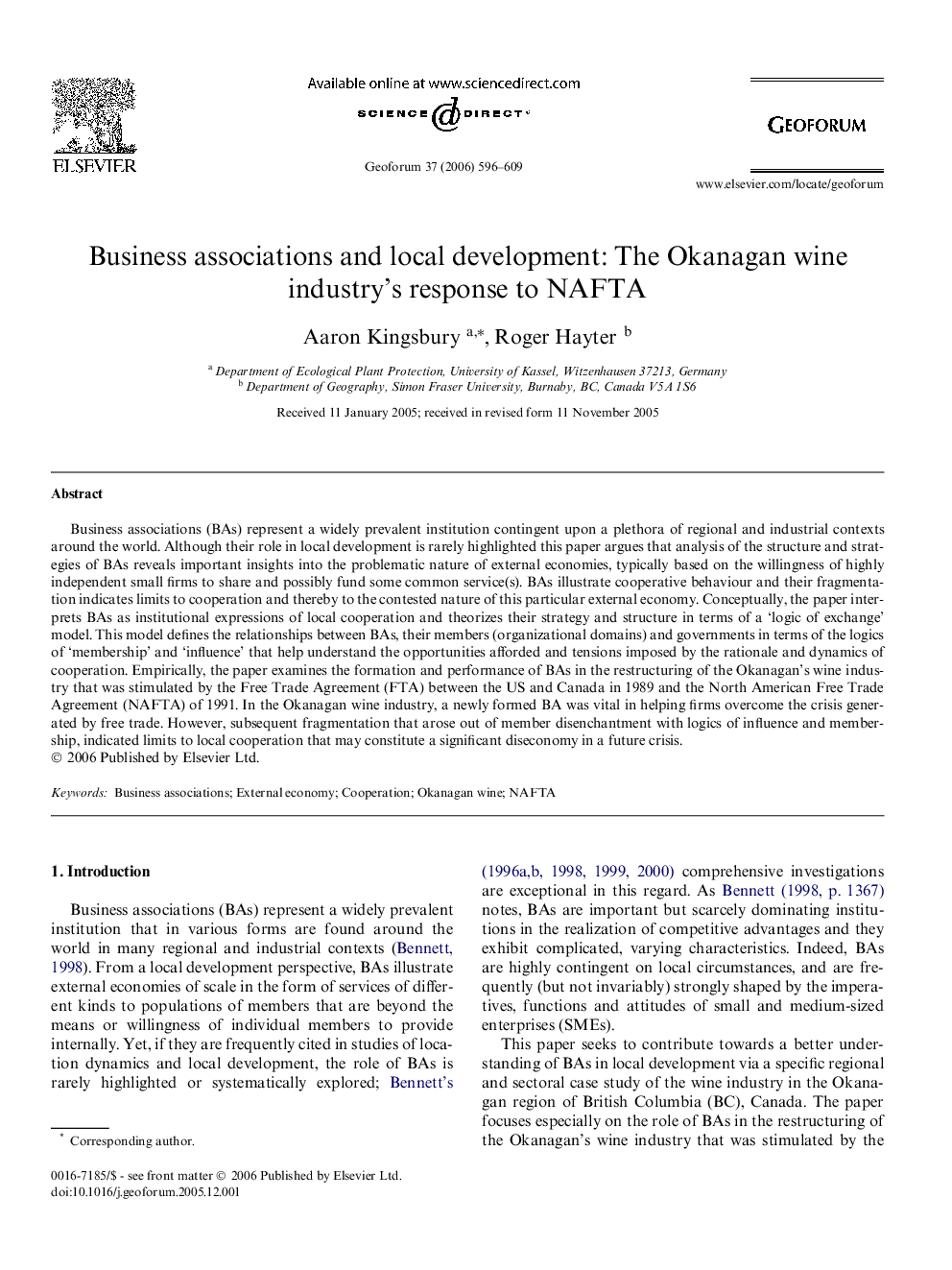| Article ID | Journal | Published Year | Pages | File Type |
|---|---|---|---|---|
| 5075155 | Geoforum | 2006 | 14 Pages |
Abstract
Business associations (BAs) represent a widely prevalent institution contingent upon a plethora of regional and industrial contexts around the world. Although their role in local development is rarely highlighted this paper argues that analysis of the structure and strategies of BAs reveals important insights into the problematic nature of external economies, typically based on the willingness of highly independent small firms to share and possibly fund some common service(s). BAs illustrate cooperative behaviour and their fragmentation indicates limits to cooperation and thereby to the contested nature of this particular external economy. Conceptually, the paper interprets BAs as institutional expressions of local cooperation and theorizes their strategy and structure in terms of a 'logic of exchange' model. This model defines the relationships between BAs, their members (organizational domains) and governments in terms of the logics of 'membership' and 'influence' that help understand the opportunities afforded and tensions imposed by the rationale and dynamics of cooperation. Empirically, the paper examines the formation and performance of BAs in the restructuring of the Okanagan's wine industry that was stimulated by the Free Trade Agreement (FTA) between the US and Canada in 1989 and the North American Free Trade Agreement (NAFTA) of 1991. In the Okanagan wine industry, a newly formed BA was vital in helping firms overcome the crisis generated by free trade. However, subsequent fragmentation that arose out of member disenchantment with logics of influence and membership, indicated limits to local cooperation that may constitute a significant diseconomy in a future crisis.
Related Topics
Social Sciences and Humanities
Economics, Econometrics and Finance
Economics and Econometrics
Authors
Aaron Kingsbury, Roger Hayter,
